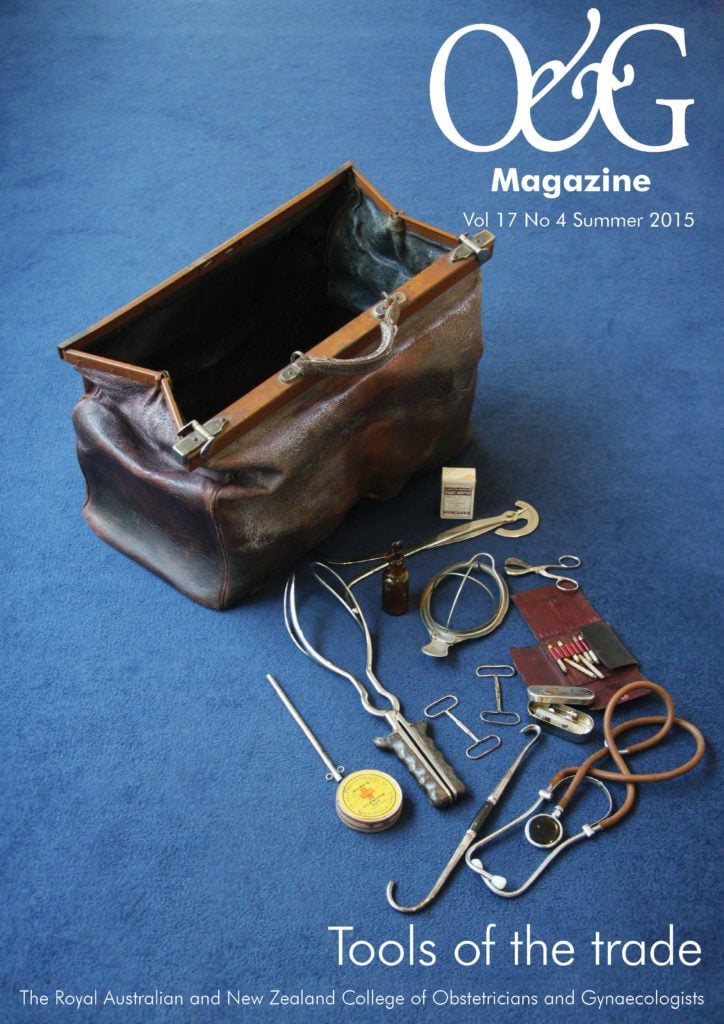The use of suture materials to ligate bleeding vessels or approximate tissue dates back to the 16th century BC, as evidenced in the Edwin Smith papyrus, the oldest record of a surgical procedure. Over the centuries, the list of materials used for suturing has grown to include metals (gold and silver), plant material (linen and cotton), and animal products (hair, intestinal tissue and silk). More recently, a wide selection of synthetic compositions has been developed. In the last decade, exciting suture and wound-closure technology, such as barbed sutures and absorbable staples, have been introduced. After millennia of experience, research and development, although the ideal universal suture material is yet to be discovered, we are edging closer.
Natural absorbable sutures
Plain and chromic catgut
Plain catgut is one of the oldest suture materials. Despite its name, catgut is normally obtained from sheep or cattle intestines. Since plain catgut is a foreign protein, it elicits a marked inflammatory response. As it is rapidly degraded by proteolytic enzymes, this suture loses 70 per cent of its tensile strength in seven days. Plain catgut is not commonly used in obstetric and gynaecological surgery.
Chromic catgut is treated with chromic acid salts to result in a suture that is less inflammatory and, subsequently, is more resistant to degradation. Chromic catgut therefore maintains more than 50 per cent of its tensile strength at seven to ten days. It is suitable for tissue in which long-term strength is not needed, such as uterine and vaginal tissue. Chromic catgut should not be used in skin because the inflammatory response it generates can lead to scarring and the suture often serves as a nidus to infection. Concerns regarding transmissible spongiform encephalopathies such as ‘mad cow disease’ have reduced supply and increased prices, leading to catgut gradually falling out of favour with surgeons globally.
Synthetic absorbable sutures
Polyglycolic acid and polyglactin 910
Polyglycolic acid (Dexon: Covidien) and polyglactin 910 (Vicryl: Ethicon and Polysorb: Covidien), two synthetic absorbable sutures, became available in the US in the 1970s. These sutures, composed of braided filaments of a synthetic polymer, were designed to be stronger, longer lasting and less inflammatory than catgut. Breakdown is by hydrolysis rather than proteolytic degradation. The result is minimal inflammatory response and a constant absorption rate. There is almost no loss in tensile strength in the first seven to ten days after implantation. These sutures are suitable for use in the closure of almost all tissue, including fascial and skin closure.
Polyglyconate and polydioxanone
These new classes of polymers allow the production of pliable monofilament sutures, which are smooth, causing less tissue trauma and are less prone to harbour micro-organisms that cause wound infection. Polyglyconate (Maxon: Covidien) and polydioxanone (PDS: Ethicon) have comparable tensile strength to that of the multifilament absorbable sutures, but these sutures undergo absorption at a much slower rate. As a result, tensile strength is maintained over a longer period of time (>90 per cent of tensile strength is maintained at seven days). Because of the delayed absorption profile, this class of suture is an excellent choice for closure of fascial layers and anal sphincter injuries.
Poliglecaprone 25, glycomer 631 and fast-absorbing polyglactin
First introduced in 1993, poliglecaprone 25 (Monocryl: Ethicon) has an absorption profile similar to chromic catgut. Poliglecaprone produces highly uniform absorption patterns and, because it is absorbed by hydrolysis, it does not induce much of an inflammatory response. This monofilament suture retains approximately 50–60 per cent of its original tensile strength at seven days and by 21 days has lost almost all tensile strength. This suture material therefore possesses the advantages of chromic catgut, but without many of the disadvantages.
Gylcomer 631 (Biosyn: Covidien) is a synthetic polyester composed of glycolide (60 per cent), dioxanone (14 per cent), and trimethylene carbonate (26 per cent). Its tensile strength profile is superior to that of poliglecaprone 25, with 75 per cent of tensile strength maintained after 14 days. Total loss of tensile strength occurs at 90–110 days.
Fast-absorbing polyglactin 910 (Vicryl Rapide: Ethicon and Velosorb Fast: Covidien) is a lower molecular weight version of polyglactin 910. The result is a braided suture with performance characteristics similar to plain catgut. Absorption is rapid, with 70 per cent of tensile strength lost in the first seven days. After 10–14 days, virtually no tensile strength remains. This suture is an excellent choice for perineal repairs as well as skin closure.
Non-absorbable sutures
Natural non-absorbable sutures
This category of suture material includes surgical silk and cotton. Silk is the gold standard against which other sutures are judged, owing to its superior handling. This is largely because it has little ‘memory’ and, as a result, it not only handles well, but it also ties easily and possesses great knot security. Silk can be considered a delayed absorbable suture in that it is often not able to be found after two years. Because silk is a foreign animal protein, its presence leads to a high level of inflammatory response. This characteristic and its multifilament composition make it an unsuitable candidate in tissue at high risk of infection.
Synthetic non-absorbable sutures
A multitude of non-absorbable synthetic sutures exist. Nylon is a synthetic polyamide polymer that is available in both braided (Surgilon: Covidien and Nurolon: Ethicon) and monofilament (Dermalon: Covidien and Ethilon: Ethicon) forms. Some practitioners reports that braided nylon handles better and provides better knot security, but monofilament nylon incites less inflammatory response and may be less prone to infection.
Polyester sutures are only produced in braided forms. Polyester sutures can either be coated or uncoated. The uncoated forms (Mersilene: Ethicon and Surgidac: Covidien) offer the best knot security. When produced in tape form, this property makes it ideal for use in cervical cerclage. Suture coatings such as teflon, polybutilate (Ethibond: Ethicon) and silicone (TiCron: Covidien) reduce tissue drag and improve handling characteristics, but knot security is generally poorer.
Polypropylene (Prolene: Ethicon and Surgipro: Covidien) is a monofilament suture material composed of a linear hydrocarbon polymer. It has the least tissue reactivity of all non-absorbable sutures. It can be difficult to handle, owing to its high memory.
Metal sutures and staples
Historically, metal sutures have been used in infected areas or for repair of wound dehiscence and evisceration. Metal sutures have extremely high tensile strength and very low tissue reactivity, but their application in modern obstetric and gynaecological surgery is rare. The exception is the use of metal staples in surgical skin closure. Surgical staples have gained popularity among obstetricians and gynaecologists, owing to the ease and speed of application. A recently published meta-analysis has found operation time for caesarean sections to be shorter by seven minutes when surgical staples were used, but the rate of wound complications, mainly in the form of wound separation, was found to be increased.1
Newer products
Antibacterial-coated sutures
Currently, only one product is commercially available in this category. Triclosan-coated polyglactin 910 (Vicryl Plus Antibacterial: Ethicon) has been found to reduce surgical site infection rate by 30 per cent.2 Handling and tension force of these sutures was found to be comparable to standard suture material. Although triclosan is relatively non-toxic, skin irritation and allergic reaction has been known to occur.
Barbed sutures
The invention of barbed sutures can be attributed to Dr Harry Buncke, whose US Patent was granted in 1999 for ‘one-way sutures having barbs on their exterior surfaces and a needle on one or both ends.’ His patents were acquired by Quill Medical (acquired by Angiotech Pharmaceuticals in 2006) in 2002 and, in conjunction with the inspired work of Dr Gregory Ruff, the first widely commercialised barbed suture, Quill Knotless Tissue-Closure Device was approved by the US Food and Drug Administration in 2004. In 2009, Covidien introduced V-Loc unidirectional barbed suture with a fixed loop. Ethicon has now introduced its own version of the barbed suture, the Stratafix, found in both unidirectional and bidirectional formats.
The complete absence of knots, the even distribution of tissue strength along the wound and the reduction of operation time are the main advantages of this type of sutures. Surgical knots are disadvantageous because they reduce the tensile strength of all sutures by thinning and stretching the material. There is also an uneven distribution of tension across the wound, with higher tension burdens placed at the knots. In laparoscopic surgery, the difficulties of tying a knot efficiently and reliably can often be challenging. This may be the reason that the use of knotless barbed sutures significantly reduced operation time in laparoscopic myomectomies3 and laparoscopic hysterectomy vaginal cuff closures4 with no increase in complications. However, the tensile strength of barbed sutures remains a concern, owing to the manufacturing process of these devices where barbs are produced by a blade cutting into the shaft of the suture material.
Absorbable subcutaneous staples
In 2006, INSORB, a subcutaneous absorbable stapling device, became commercially available. The staples consist of a co-polymer of 70 per cent polyactide and 30 per cent polyglycolide that breaks down by hydrolysis with substantial absorption in 10–12 weeks and with minimal inflammatory response. This novel wound closure device combines the efficiency of staples with the superior wound approximation of subcuticular sutures. Madsen et al found that for caesarean sections, compared to subcuticular suturing, skin closure time was significantly reduced while wound complication and patient satisfaction rates did not differ.5
Conclusion
Because the ideal universal suture is not yet a reality, practitioners need to be familiar with the properties and suitable applications of various suture materials and wound-closure technologies available to them. This article has summarised a wide range of time-tested, reliable suture materials and included newer materials and devices that have become available in recent years. Most of these products, such as antibacterial-coated and barbed sutures, have ample scientific evidence supporting their application in surgery, but more data will be welcomed for absorbable subcutaneous staples.
References
- Mackeen AD, Schuster M & Berghella V, ‘Suture versus staples for skin closure after cesarean: a metaanalysis’, American Journal of Obstetrics and Gynecology, Vol. 212, no. 5, p621.
- Wang ZX, Jiang CP, Cao Y & Ding YT, ‘Systematic review and meta-analysis of triclosan-coated sutures for the prevention of surgical-site infection’, British Journal of Surgery, Vol. 100, no. 4, pp. 465-73.
- Tulandi T & Einarsson JI, ‘The use of barbed suture for laparoscopic hysterectomy and myomectomy: a systematic review and meta-analysis’, Journal of Minimally Invasive Gynecology, Vol. 21, no.2, pp. 210-6.
- Bogliolo S et al, ‘Barbed suture in minimally invasive hysterectomy: a systematic review and meta-analysis’, Archives of Gynecology and Obstetrics, vol. 292, no. 3, pp. 489-97.
- Madsen AM et al, ‘Absorbable Subcuticular Staples Compared With Suture for Cesarean Closure: A Randomized Controlled Trial’, Obstetrics and Gynecology, May 2015.






Leave a Reply